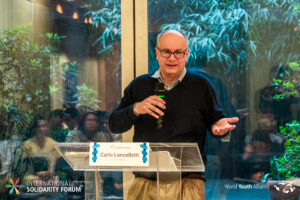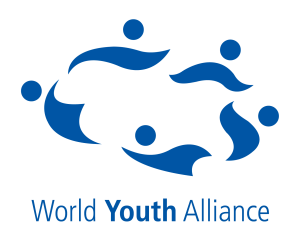This is a second in a series of “Debating Death” articles which examine ethical, political, medical, legal, social and cultural aspects of legalizing euthanasia.
In the previous article, I examined whether liberal societies should legalize euthanasia out of respect for personal autonomy of individuals. As we have seen with the right to autonomy in euthanasia, each right must have someone who demands it and another towards whom the claim is addressed. If we have a right to something, there must be someone who can grant us this right by doing something or abstaining from some action.
In the case of euthanasia, we are making a claim towards the State, but also towards the entire class of people who must then execute this right: the medical profession. Now, if you would address this claim towards any other profession it would not be a problem for the profession as such (although it could raise many other concerns). Butchers could remain perfectly loyal to their profession if they would practice their trade on consenting human beings post-mortem.
The problem is in the fact that before entering their profession, medical practitioners take the Hippocratic Oath which should set elementary ethical framework for the medical field. In its original form, the Hippocratic Oath stated:
“I will neither give a deadly drug to anybody who asked for it, nor will I make a suggestion to this effect.”
Today’s version of the oath, called the Declaration of Geneva, also says:
“I will maintain the utmost respect for human life; I will not use my medical knowledge to violate human rights and civil liberties, even under threat.”

Medicine has always operated under the basic principles that life should be preserved, disease cured, and pain relieved. As Dr. Leon Kass puts it: “Healing is thus the central core of medicine: to heal, to make whole, is the doctor’s primary business.”
Any society that would legalize euthanasia would undermine one of those basic principles and necessarily endanger the integrity of medical profession.
Let us consider an example. The surgeon is performing surgery on the patient and the surgery goes wrong. He starts to correct the situation, but at one point realizes that if he saves the patient he may become disabled or have some other loss of function. In his country euthanasia in severe cases is legal even without the consent of the patient or of the family. What does he do? Does he save the patient or lets him die to prevent all the sufferings he will maybe have as a disabled person?
This is just one possible case out of infinite possibilities. They all testify to the same basic fact: you cannot preserve the integrity of the profession if you undermine the basic principles that define it. It would be the same if we would legally enable policemen to occasionally enforce unlawful things. Although this happens sometimes, it cannot be legitimized by law.
Slippery-slope as a necessary consequence
If we abandon these first principles, it will become impossible to rationally draw the objective line anywhere. As philosopher John Finnis in his testimony before the UK House of the Lords explains:
“In the new situation, any attempt to draw the line is necessarily artificial. The principles on which any attempted line would be based undermine each other and subvert the attempt to hold a line. If autonomy is the principal or main concern, why is the lawful killing restricted to terminal illness and unbearable suffering? If suffering is the principle or concern, why is the lawful killing restricted to terminal illness? Why must the suffering be unbearable if there is real and persistent discomfort? If suffering is unbearable, why should one have to wait for 14 days? If suffering and terminal prognosis are the concern, why is relief restricted to those who are capable of asking for it? Each of those questions is not simply a reason for doubting the rationality of any proposed line alternative to the present principled lines, each of the questions is also a reason why there will be much more abuse and secrecy and underground killing than at present, because each of those questions can and will be asked by any doctor faced with a patient demanding euthanasia or assistance in suicide or with a patient not demanding it but suffering or confronting an early death.”
This is not merely a problem in the abstract. Netherlands was the first country to legalise euthanasia, in 2002, but only for patients who were considered to be suffering unbearable pain with no hope of a cure. The first problem was that “unbearable suffering” applied not only to people with terminal illness, but also with some mental illnesses and dementia. Today, not only that the disease doesn’t have to be terminal, but the suffering also isn’t always “unbearable” (and how can we measure that?). Numbers of mentally ill patients killed by euthanasia is increasing steadily. Shocking cases include a Brussels man who described how he arranged the double euthanasia of his octogenarian parents who wanted to die because they were afraid of loneliness. Another case was of a Dutch woman in her 80s was killed by her doctors just because she did not want to live in a care home.

One study from 2010 discovered that 66 of 208 identified assisted deaths in Belgium were administered without an explicit patient request. According to the the Dutch 2001 official government figures, generated by confidential interviews with hundreds of Dutch medical practitioners and questionnaires to many thousands of medical practitioners who had signed death certificates, almost half of the euthanasia cases would be done without the legally required procedures and the patient’s consent. In 1991 over 70 per cent of the deaths caused by lethal overdoses of painkillers with intent to cause death were without the patient’s request or knowledge.
Nowadays euthanasia doesn’t just refer to the elderly, but through The Groeningen Protocol it is also established for the newborn children. A 2005 study in the New England Journal of Medicine recorded that in the previous seven years, 22 cases of infant euthanasia were reported in the Netherlands. A 2013 Netherlands commission on euthanasia argued that as many as 650 infants per year should be eligible for euthanasia on the basis of the children’s diagnosis as “babies who in spite of very intensive treatment are certain to die in the short term, babies with a poor prognosis and very poor expected quality of life, or babies who are not dependent on intensive treatment but who face a life of severe suffering with no prospect of improvement.”
When supply creates the demand
In 2017 Euthanasia accounted for 5,516 deaths in the Netherlands, or 3.9 percent of all deaths nationwide. As the barriers were loosened, the demand increased. In case of euthanasia it seems that Say’s Law is accurate: the supply creates its own demand.
Currently the Dutch Health Minister is pushing for an even more liberalized version of the law which would allow euthanasia for those who feel they have “completed” life, even though the special commission enlisted to study the possibility of this extension concluded there was no need for it. Finnis’s prediction is obviously becoming true: there’s no objective ground where to draw the line. Once we legalize euthanasia, there’s no point at which we should stop. The slippery slope is not only a feared outcome of legalizing euthanasia; it’s an inherent consequence.
Also, a great number of suicides are done by people suffering from depression or other mental illnesses. Legalizing euthanasia puts them in increased danger of being killed instead of being treated and offered a second chance. Under those circumstances, it’s hard to determine their capacity for autonomy of choice, as well as objectively evaluate their “mental suffering.” Gerty Casteelen was a 54-year-old psychiatric patient with molysomophobia, a fear of dirt or contamination. Her doctors decided that she would not be able to control her fear and agreed to administer a lethal injection.
Additionally, as the New York Task Force on Life and the Law wrote in its 1994 report, “terminally ill patients who do desire suicide or euthanasia often suffer from a treatable mental disorder, most commonly depression. When these patients receive appropriate treatment for depression, they usually abandon the wish to commit suicide.” Also, with the medications available today most pain can be alleviated or reduced to a tolerable level.
Corruption of the patient-doctor relationship
Finally, what happens is that the patient-doctor relationship becomes corrupted. This is because,as Dr. Bernard Baumrin calls it, the “damage that will be created by the perception that physicians sometimes aid and even abet people in taking their own lives.” Patients cannot anymore be sure that the doctor will be committed to preserve her life and health. Dr. Kass in his mentioned article offers a vivid example:
“Imagine the scene: you are old, poor, in failing health, and alone in the world; you are brought to the city hospital with fractured ribs and pneumonia. The nurse or intern enters late at night with a syringe full of yellow stuff for your intravenous drip. How soundly will you sleep? It will not matter that your doctor has never yet put anyone to death; that he is legally entitled to do so—even if only in some well-circumscribed areas—will make a world of difference.”

Dr. John Finnis explains why this is so:
“It is the patient who is now responsible… for avoiding termination of his life; if he does not wish to be killed by his doctor then he must state it clearly orally and in writing, well in advance. (…) The violation of the right not to be killed, the right not to be put in vivid fear of being killed and the violation of the right not to be pressed into suicidal decisions would therefore become, I am confident, more widespread and more burdensome—I suspect enormously more burdensome—than the present violation of the autonomy rights of a relatively few that is alleged by some [proponents of legalising euthanasia]…”
This is probably why all major medical organizations oppose the practice, including the World Health Organization, American Medical Association, the American College of Physicians, Canadian Medical Association, British Medical Association, Royal College of Physicians, German Medical Association and over 20 others.
The World Medical Association (WMA) has consistently highlighted its “strong belief that euthanasia is in conflict with basic ethical principles of medical practice,” even though it is allowed by law in some countries. WMA’s Declaration on Euthanasia, adopted by the 38th World Medical Assembly, Madrid, Spain, October 1987, states:
“Euthanasia, that is the act of deliberately ending the life of a patient, even at the patient’s own request or at the request of close relatives, is unethical.”
The WMA Statement on Physician-Assisted Suicide, adopted by the 44th World Medical Assembly, Marbella, Spain, September 1992 likewise states:
“Physicians-assisted suicide, like euthanasia, is unethical and must be condemned by the medical profession. Where the assistance of the physician is intentionally and deliberately directed at enabling an individual to end his or her own life, the physician acts unethically.”
Thus, as we have seen, legalized euthanasia threatens the integrity of the medical profession and puts the dignity of the patient in danger. What happens consequentially is that the most vulnerable groups in the society lose necessary protections. This I will examine in greater detail in the next article.
Written by Hrvoje Vargić, Regional Director of WYA Europe








